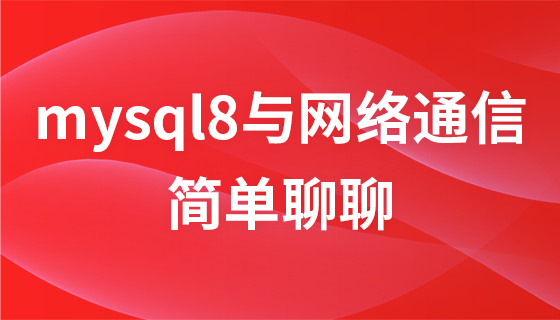如何使用 Laravel 创建 REST API
来源:dev.to
时间:2024-12-02 14:36:49 246浏览 收藏
欢迎各位小伙伴来到golang学习网,相聚于此都是缘哈哈哈!今天我给大家带来《如何使用 Laravel 创建 REST API》,这篇文章主要讲到等等知识,如果你对文章相关的知识非常感兴趣或者正在自学,都可以关注我,我会持续更新相关文章!当然,有什么建议也欢迎在评论留言提出!一起学习!

您好!在本教程中,我们将在 laravel 中构建一个完整的 rest api 来管理任务。我将指导您完成从设置项目到创建自动化测试的基本步骤。
第 1 步:项目设置
创建一个新的 laravel 项目:
composer create-project laravel/laravel task-api cd task-api code .
配置数据库:
在 .env 文件中,设置数据库配置:
db_database=task_api db_username=your_username db_password=your_password
生成任务表:
运行命令为任务表创建新的迁移:
php artisan make:migration create_tasks_table --create=tasks
在迁移文件(database/migrations/xxxx_xx_xx_create_tasks_table.php)中,定义表结构:
<?php
use illuminate\database\migrations\migration;
use illuminate\database\schema\blueprint;
use illuminate\support\facades\schema;
return new class extends migration
{
public function up(): void
{
schema::create('tasks', function (blueprint $table) {
$table->id();
$table->string('title');
$table->text('description')->nullable();
$table->boolean('completed')->default(false);
$table->timestamps();
});
}
public function down(): void
{
schema::dropifexists('tasks');
}
};
运行迁移以创建表:
php artisan migrate
第 2 步:创建模型和控制器
为任务创建模型和控制器:
php artisan make:model task php artisan make:controller taskcontroller --api
定义任务模型(app/models/task.php):
<?php
namespace app\models;
use illuminate\database\eloquent\factories\hasfactory;
use illuminate\database\eloquent\model;
class task extends model
{
use hasfactory;
protected $fillable = ['title', 'description', 'completed'];
}
第 3 步:定义 api 路由
在routes/api.php文件中,添加taskcontroller的路由:
<?php
use app\http\controllers\taskcontroller;
use illuminate\support\facades\route;
route::apiresource('tasks', taskcontroller::class);
第四步:在taskcontroller中实现crud
在taskcontroller中,我们将实现基本的crud方法。
<?php
namespace app\http\controllers;
use app\models\task;
use illuminate\http\request;
class taskcontroller extends controller
{
public function index()
{
$tasks = task::all();
return response()->json($tasks, 200);
}
public function store(request $request)
{
$request->validate([
'title' => 'required|string|max:255',
'description' => 'nullable|string'
]);
$task = task::create($request->all());
return response()->json($task, 201);
}
public function show(task $task)
{
return response()->json($task, 200);
}
public function update(request $request, task $task)
{
$request->validate([
'title' => 'required|string|max:255',
'description' => 'nullable|string',
'completed' => 'boolean'
]);
$task->update($request->all());
return response()->json($task, 201);
}
public function destroy(task $task)
{
$task->delete();
return response()->json(null, 204);
}
}
步骤 5:测试端点(vs code)
现在我们将使用名为 rest client 的 vs code 扩展手动测试每个端点 (https://marketplace.visualstudio.com/items?itemname=humao.rest-client)。如果您愿意,您还可以使用失眠或邮递员!
安装扩展程序后,在项目文件夹中创建一个包含以下内容的 .http 文件:
### create new task
post http://127.0.0.1:8000/api/tasks http/1.1
content-type: application/json
accept: application/json
{
"title": "study laravel"
}
### show tasks
get http://127.0.0.1:8000/api/tasks http/1.1
content-type: application/json
accept: application/json
### show task
get http://127.0.0.1:8000/api/tasks/1 http/1.1
content-type: application/json
accept: application/json
### update task
put http://127.0.0.1:8000/api/tasks/1 http/1.1
content-type: application/json
accept: application/json
{
"title": "study laravel and docker",
"description": "we are studying!",
"completed": false
}
### delete task
delete http://127.0.0.1:8000/api/tasks/1 http/1.1
content-type: application/json
accept: application/json
此文件可让您使用 rest 客户端 扩展直接从 vs code 发送请求,从而轻松测试 api 中的每个路由。
第 6 步:测试 api
接下来,让我们创建测试以确保每条路线按预期工作。
首先,为任务模型创建一个工厂:
php artisan make:factory taskfactory
<?php
namespace database\factories;
use illuminate\database\eloquent\factories\factory;
class taskfactory extends factory
{
public function definition(): array
{
return [
'title' => fake()->sentence(),
'description' => fake()->paragraph(),
'completed' => false,
];
}
}
phpunit 配置:
<?xml version="1.0" encoding="utf-8"?>
<phpunit xmlns:xsi="http://www.w3.org/2001/xmlschema-instance"
xsi:nonamespaceschemalocation="vendor/phpunit/phpunit/phpunit.xsd"
bootstrap="vendor/autoload.php"
colors="true"
>
<testsuites>
<testsuite name="unit">
<directory>tests/unit</directory>
</testsuite>
<testsuite name="feature">
<directory>tests/feature</directory>
</testsuite>
</testsuites>
<source>
<include>
<directory>app</directory>
</include>
</source>
<php>
<env name="app_env" value="testing" />
<env name="bcrypt_rounds" value="4" />
<env name="cache_driver" value="array" />
<env name="db_connection" value="sqlite" />
<env name="db_database" value=":memory:" />
<env name="mail_mailer" value="array" />
<env name="pulse_enabled" value="false" />
<env name="queue_connection" value="sync" />
<env name="session_driver" value="array" />
<env name="telescope_enabled" value="false" />
</php>
</phpunit>
创建集成测试:
php artisan make:test taskapitest
在tests/feature/taskapitest.php文件中,实现测试:
<?php
namespace tests\feature;
use app\models\task;
use illuminate\foundation\testing\refreshdatabase;
use tests\testcase;
class taskapitest extends testcase
{
use refreshdatabase;
public function test_can_create_task(): void
{
$response = $this->postjson('/api/tasks', [
'title' => 'new task',
'description' => 'task description',
'completed' => false,
]);
$response->assertstatus(201);
$response->assertjson([
'title' => 'new task',
'description' => 'task description',
'completed' => false,
]);
}
public function test_can_list_tasks()
{
task::factory()->count(3)->create();
$response = $this->getjson('/api/tasks');
$response->assertstatus(200);
$response->assertjsoncount(3);
}
public function test_can_show_task()
{
$task = task::factory()->create();
$response = $this->getjson("/api/tasks/{$task->id}");
$response->assertstatus(200);
$response->assertjson([
'title' => $task->title,
'description' => $task->description,
'completed' => false,
]);
}
public function test_can_update_task()
{
$task = task::factory()->create();
$response = $this->putjson("/api/tasks/{$task->id}", [
'title' => 'update task',
'description' => 'update description',
'completed' => true,
]);
$response->assertstatus(201);
$response->assertjson([
'title' => 'update task',
'description' => 'update description',
'completed' => true,
]);
}
public function test_can_delete_task()
{
$task = task::factory()->create();
$response = $this->deletejson("/api/tasks/{$task->id}");
$response->assertstatus(204);
$this->assertdatabasemissing('tasks', ['id' => $task->id]);
}
}
运行测试:
php artisan test
*谢谢! *
今天关于《如何使用 Laravel 创建 REST API》的内容就介绍到这里了,是不是学起来一目了然!想要了解更多关于的内容请关注golang学习网公众号!
-
501 收藏
-
501 收藏
-
501 收藏
-
501 收藏
-
501 收藏
-
133 收藏
-
458 收藏
-
429 收藏
-
255 收藏
-
431 收藏
-
228 收藏
-
419 收藏
-
360 收藏
-
119 收藏
-
112 收藏
-
130 收藏
-
215 收藏
-

- 前端进阶之JavaScript设计模式
- 设计模式是开发人员在软件开发过程中面临一般问题时的解决方案,代表了最佳的实践。本课程的主打内容包括JS常见设计模式以及具体应用场景,打造一站式知识长龙服务,适合有JS基础的同学学习。
- 立即学习 543次学习
-

- GO语言核心编程课程
- 本课程采用真实案例,全面具体可落地,从理论到实践,一步一步将GO核心编程技术、编程思想、底层实现融会贯通,使学习者贴近时代脉搏,做IT互联网时代的弄潮儿。
- 立即学习 516次学习
-

- 简单聊聊mysql8与网络通信
- 如有问题加微信:Le-studyg;在课程中,我们将首先介绍MySQL8的新特性,包括性能优化、安全增强、新数据类型等,帮助学生快速熟悉MySQL8的最新功能。接着,我们将深入解析MySQL的网络通信机制,包括协议、连接管理、数据传输等,让
- 立即学习 500次学习
-

- JavaScript正则表达式基础与实战
- 在任何一门编程语言中,正则表达式,都是一项重要的知识,它提供了高效的字符串匹配与捕获机制,可以极大的简化程序设计。
- 立即学习 487次学习
-

- 从零制作响应式网站—Grid布局
- 本系列教程将展示从零制作一个假想的网络科技公司官网,分为导航,轮播,关于我们,成功案例,服务流程,团队介绍,数据部分,公司动态,底部信息等内容区块。网站整体采用CSSGrid布局,支持响应式,有流畅过渡和展现动画。
- 立即学习 485次学习
